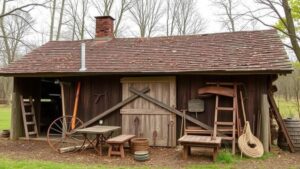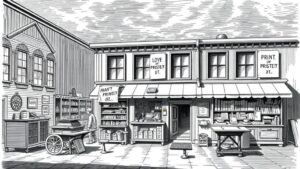Mining Historical Blacksmith Shop Locations for Artifact Finds
Mining Historical Blacksmith Shop Locations for Artifact Finds
The study of historical blacksmith shops offers valuable insights into the technological and cultural developments of communities, particularly in the United States during the 18th and 19th centuries. This article examines the methodology of locating former blacksmith shops, the significance of these sites for archaeological research, and the types of artifacts typically recovered. The findings can shed light on local economies, social structures, and technological advancements of the time.
The Historical Context of Blacksmith Shops
Blacksmithing has been a critical trade since ancient times, especially during the Industrial Revolution when iron and steel were pivotal to progress. In the 19th century, blacksmith shops became central to American towns, often providing essential services to farmers, builders, and transportation industries. Data from the U.S. Census reports indicate that by 1850, there were approximately 43,000 blacksmiths in the United States, which highlights their prevalence and importance in American society.
Methodologies for Locating Historical Blacksmith Shops
The process of locating historical blacksmith shop sites involves a multidisciplinary approach combining historical research, archaeological fieldwork, and technological tools. Several methodologies are employed:
- Historical Research: Archival research in local libraries, historical societies, and online databases can yield documents such as business permits and tax records that indicate the presence of blacksmiths. For example, records from the 1800s in Virginia document over 200 blacksmith establishments.
- Topographical Analysis: By analyzing historical maps and land use documents, researchers can identify potential blacksmithing sites. The Sanborn Fire Insurance Maps, which date back to the late 19th century, depict various buildings and can assist in locating former blacksmith shops.
- Ground Penetrating Radar (GPR): This non-invasive technique allows researchers to visualize subsurface structures without excavation. GPR has been successfully used at several historical sites, revealing remnants of blacksmith forges.
Significance of Artifacts from Blacksmith Shops
Artifacts recovered from blacksmith sites offer critical evidence of the techniques, tools, and cultural practices of the past. Common finds include:
- Hammers and Anvils: These tools are fundamental to blacksmithing, with anvils often engraved with the makers marks, providing insights into local craftsmanship.
- Metal Fasteners: Nails, hinges, and other fasteners can reveal the scale and type of production that took place in a blacksmith shop.
- Furnace Remains: The remains of coal-burning furnaces can provide data on the materials and processes used in metalworking.
For example, an archaeological dig at a blacksmith site in New York unearthed a variety of artifacts including over 300 nails, various tools, and an intact forge, contributing to the understanding of blacksmithing practices from the 1830s.
Real-World Applications of Blacksmith Shop Research
The study of blacksmith shops is not merely academic; it has practical implications in various sectors:
- Cultural Heritage Management: Understanding blacksmithings historical context assists in preserving these sites and can be integral to tourism development.
- Educational Programs: Schools can develop programs that teach blacksmithing techniques, thereby reviving traditional crafts and engaging students with history.
- Archaeological Training: Field schools can incorporate blacksmith site excavations as training for future archaeologists, promoting hands-on experience with historical methodologies.
Conclusion and Future Directions
Mining historical blacksmith shop locations for artifact finds enhances our comprehension of regional development patterns, social structures, and economic history. Future research should focus on interdisciplinary collaboration, leveraging advancements in technology and methodologies to deepen our understanding further. As communities continue to uncover and preserve this essential part of their heritage, the significance of blacksmith shops will remain an invaluable asset for cultural history.
Overall, the study of blacksmith shops not only provides a glimpse into technological advances but also illustrates the intricate relationship between craftsmanship and community development. By employing thorough research methodologies and emphasizing the relevance of excavated artifacts, historians and archaeologists alike can contribute significantly to the narrative of our shared past.



